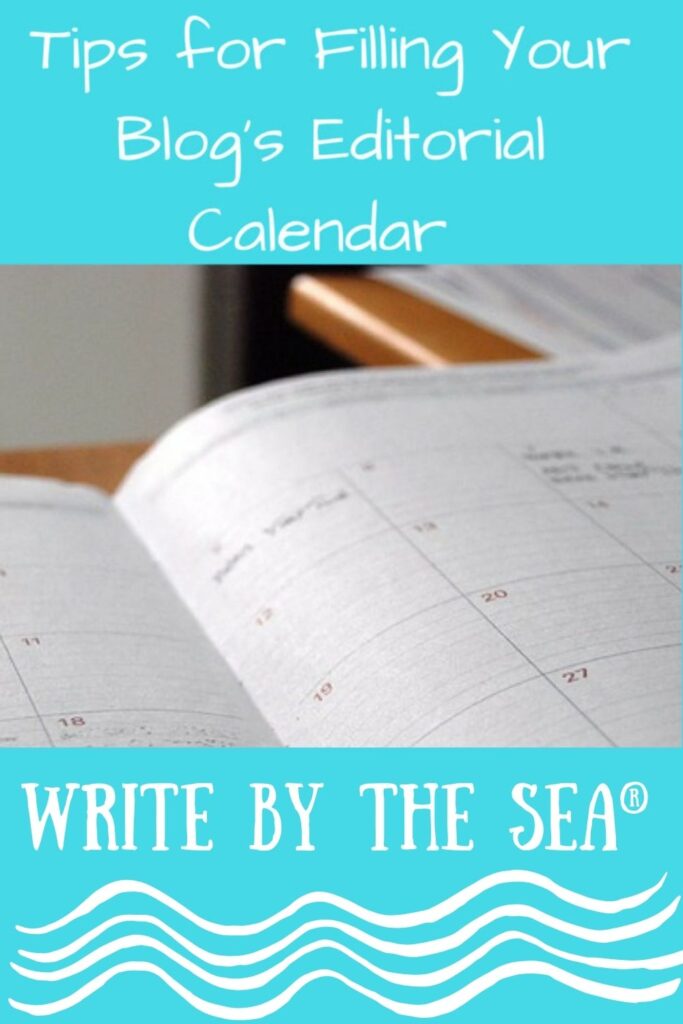When you get the idea for a blog, you really want to start off on the right foot.
You take the time to find out which platform is best and which plugins will help you make the most of your visitors’ experience – but then you get stuck when it comes time to create the actual content for your blog.
Yet it can be embarrassing and it can hurt your blog traffic if you start abandoning your blog frequently to wait for inspiration to strike.
You have to take a three-step approach to blogging.

Step # 1: Organize Your Blog.
If you’re scattered on your blog, it confuses the readers, search engine spiders – and even you—so you want to be sure the content on your blog is well organized.
Decide which categories of information you’ll include on your blog.
For example, look at the categories here at writebythesea, which are in the top menu bar on this page.
Each article posted here comes under one or more of those categories—Fiction, Nonfiction, Freelance Writing, etc.
Next, create a tagline for your blog, so it’s apparent to anyone who lands on your blog who the site is for and what it will provide for those readers.
Again, using writebythesea as an example, our tagline is simply, “Tips, Resources, and Coaching for Writers”, so obviously the site is for writers and they will find a variety of content here related to this tagline.
Step #2: Map out a schedule for your blogging efforts.
Having a deadline for yourself can help you work towards a specific goal, not just something vague.
Look at the categories you created for your blog and then decide when you will create a post for each category.
For example, you might decide to create posts for a specific category every Monday.
Every Wednesday you might post something related to a different category.
And every Friday you might post something under another category.
Step #3: Begin creating your content.
You’ll want to create content that will appeal to your specific readers (your target market) in some way.
If you’re an author, your content might be based on your books and/or your writing techniques, routines, etc. if your readers will benefit from this type of information.
It’s usually easier to figure what to write about once you’ve created the categories for your blog and you also are clear about who your readers are and what they will want from your blog.
Two Simple Tools to Help You Get Organized
There are two simple tools you can use to get organized.
The first is a planning calendar and the second is an editorial calendar, which is for completed work that you are doing on your blog.
You can either buy a calendar or print one out from a site like this: http://www.pdfcalendar.com/monthly.
Print one out for the current month, and possibly the next month.
You can schedule it as far out as you like.
This is your planning calendar.
You can use this to fill in the days with whatever you’ll be blogging about.
This helps you plan what needs to be written, and when.
This is perfect for using yourself or for whenever you’re using a freelance ghostwriter to create your blog content and you want to share it with them so that they can plan for publishing dates.
Once you have the blog posts created, you can use a different type of organizer to help you schedule them for publication.
A free plugin called WordPress Editorial Calendar makes this a simple drag and drop process.
As soon as you upload a new post, you can drag the post around on your calendar to wherever you want it to be for it to go live.
This can help if you have some timely information that needs to bump a previously scheduled topic.
By using a calendar plugin, you can glance quickly at your blog schedule and see where there are gaps.
It’s important to have a consistent publication schedule.
Plus, it helps you get more consistent traffic to your blog because your readers know when to expect updates.
Now, read part 2 of this article, How Often Should You Be Blogging, at WritersontheMove.







One Comment
Comments are closed.